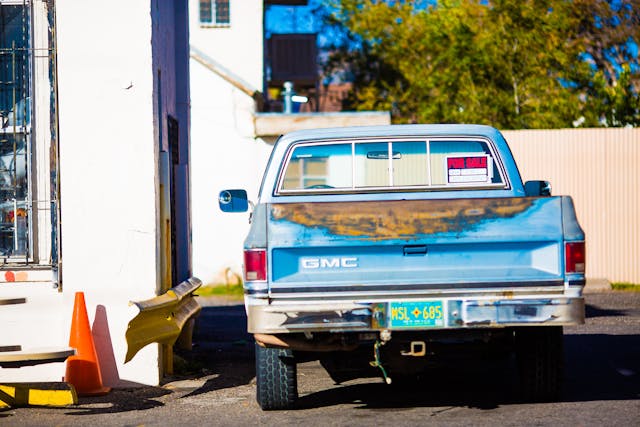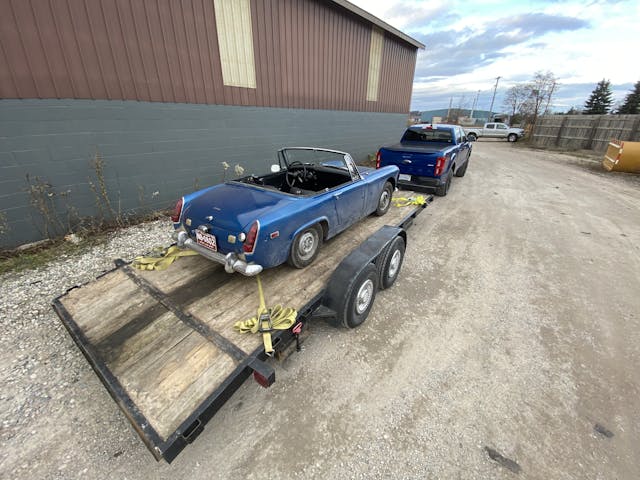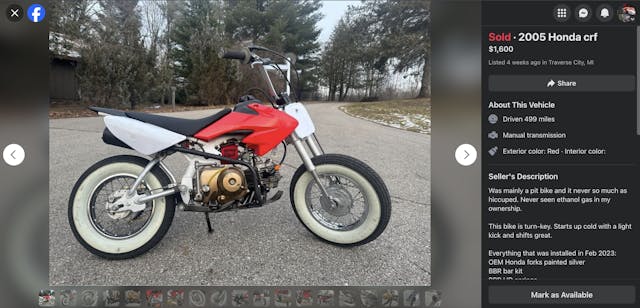Media | Articles
6 Tips to Take Your “For Sale” Ad from Good to Great
If there is one universal experience in the car world, it is the process of buying or selling a car. Buyers and sellers can get burned regardless of income bracket, so we thought we’d share some quick guidelines that would set sellers up for success, whether the machine they’re selling is something they don’t need or something that would simply be best used by someone else.
If you write an informative, well-presented ad, you’ll usually be rewarded with knowledgeable buyers. A great ad is not so much a sales pitch as a launchpad for the buyer’s daydreams. It allows a buyer to picture themselves owning the thing you are selling, to feel confident that what they are picturing is what they are buying, and to plan the process of getting it.
Tip #1: Decent photos
This one goes without saying for most of us, but it really is important to give current, accurate photos of the car you want to sell. The character count in most listings limits what we can describe, so lean on the old saying about one picture and a thousand words.
Taking the time to capture well-lit, descriptive, and clear photos proves that you care about what you are selling, and buyers will approach you as such. Artsy photos can be fun in an ad, but they aren’t really needed. Heavily retouched photos can even make a buyer suspect that problems are hiding somewhere behind the filter. Present the photos that you would want to see if you were shopping for what you are selling. Otherwise, you may provoke suspicion: This photographer should open a lemonade stand, if they’re this good at dressing up a lemon!
Tip #2: Location

The internet allows both buyer and seller to cast a wider net than ever before. Buyers are increasingly willing to drive and pick things up, and an area code or region is not enough to satisfy them. Of course, your street address is not something to post on the internet, either, so stick to a well-defined and easily findable city or town as a point of reference. This gives people the ability to accurately estimate the distance to you and also allows the algorithm of the marketplace app—whichever one you’re using—to show your listing to people who are looking for vehicles in that area.
Tip #3: Asking price
In my experience, there are few things more fragile than the ego of a seller who doesn’t list an asking price. Maybe I am just overly sensitive and don’t want to insult sellers, but striking up a conversation with a seller only to realize we aren’t even close on price is annoying—usually, for both parties.
My favorite line is “I’m sorry, but I think we are too far apart for me to make an offer without insulting you. Best of luck with the sale and appreciate your time.” No seller wants to read that. So list a price. Yes, it hurts to get a lot of interest at your listing price just to realize you could have gotten more money had you asked, but sorting through lowball offers in the hopes that one person throws out one that’s crazy high can get infuriating.
Tip #4: What it needs to leave
This sounds strange at first, but as a person who has been casually shopping for a lathe or mill over the last year or so, it always surprises me that many sellers do not mention whether they can help a potential buyer load or move large tools. I’m a lot more inclined to pay your asking price if you also will help get something on my trailer—or, at the very least, if you will give me a heads up of what I should expect when doing so myself. Some project cars sometimes need a set of roller wheels and tires to even get on a trailer.
I can already read the counterarguments—”It’s not my job to do your research”—but, if you’re the seller, sharing this information is free. It also makes you seem more approachable—even if you say you are not helping at all—and limits the number of times someone will show up unprepared or, worse, reach out with questions and then disappear from the conversation.
Tip #5: Contact information

A friend of mine recently found a motorcycle for sale: good condition, decent price, located nearby. He gathered his cash and sent the seller a message. Then he waited. And waited. He resorted to internet sleuthing to find the person’s other social media profiles and sent them more messages about the bike on different channels. Still no reply. Who goes through the effort of listing something for sale just to ignore buyers? (Cue the jokes: “Yes dear, I listed it, but I guess no one is buying.”)
But really, include in the listing how you prefer to be contacted. As annoying as some potential buyers may find it to eschew the cold comfort of a text message and actually pick up the phone, there is something to be said, if you’re the seller, for weeding out those serious enough to make the time to call.
Tip #6: What you’ve done to it
Even if you don’t have receipts, be honest about what you’ve done—or haven’t done—to the vehicle in terms of work or maintenance. Such information really does help make sure that the seller knows what they are buying. Again, providing this information is free—and it can often be a factor that sells someone on buying a car or motorcycle they might not have otherwise considered. I personally have driven further and paid more for a vehicle that came from a seller who was honest about the flaws of their project. The reality is always worse than the seller says, but at least they gave me a good picture and helped me mentally set the bar. That’s worth something.
***
Marketplace
Buy and sell classics with confidence
Check out the Hagerty Media homepage so you don’t miss a single story, or better yet, bookmark it. To get our best stories delivered right to your inbox, subscribe to our newsletters.









Rule #1 on photos should be to take the time to at least clear junk out of the car, or better yet to clean and detail the car. It’s a major turn off to see that a seller hasn’t taken a few minutes to even clear food wrappers from the floor, vacuum, or clean a car… in addition to just not looking good, it doesn’t give the impression that they have been any better with other maintenance. Even worse are those cars listed as ‘runs and drives great’ and you see the stop leak, starting fluid, and jump box on the passenger seat…
How about the night time photos, what don’t they want you to see? Or the car is still on the trailer, must have just picked it up and already doubled the price. Again I just pass on looking any further. Also agree with the trash left in the car, pretty good indicator of how the car was maintained.
So many terrible and low res photos out there. Cropped funny, too dim, too bright, filtered. Yeah I have seen it all. My favorite are pictures from 10+ years ago, how about some from today?
I hope most sellers aren’t reading this article, I’ve gotten great deals from their inadequacies.
Me too. I have a hobby of bringing older scooters, mostly Hondas and now Piaggios (not Vespas) back to life. People sell scooters when they won’t start in their own garage or alley or parking space and they haven’t got a clue what to do. A shop is going to charge a lot to come and get it, and it’s easy to see how repair costs could be more than the scooter would be worth if it was running. The descriptions are sometimes pathetic, sometimes funny, sometimes complete nonsense. I kind of like the most clueless ones.
Just had this problem when trying to by used trailer, seller would not give up address or phone number. Wanted to push back pickup date after I was on the road.
Photos of a wet car are often hiding a bad paint job. See this a lot with dealers. I’ve even gone to look at a car and when I got there it was wet. Wet photos suggest the worst.
Can’t emphasize enough about taking good photos. Use the sun as your friend. Never shoot into the sun and be careful to avoid water/oil spots around or under the car. Take a lot of photos and closely examine/discard those that don’t show your car as you see it. Interior photos are important so you will need good lighting and patience. Make sure the surrounding area does not detract from or photobomb your car. Use a good camera or, my preference, your iPhone or iPad.
Too Much too list. —- Your Ad is the opportunity to actual list all of the information about the car.
No comments. Just a question. What is the buy way to handle a transaction/sale so both buyer and seller know they aren’t getting scammed?
I see so many ads that are one long sentence with no punctuation marks, often in all caps. These types of ads are very difficult to read, and may be one reason why people don’t read the full ad. Also, break up your ad into paragraphs with a spacing between each paragraph. Again, the ideal is to make them easy to read and decipher.
Wash the car. Vacuum it out. Make it look like you care about it. List its faults. Take a photo of its documents to include in the listing – owner’s manual, etc.
Nobody sells a car they like, unless they have to.
Bought a pristine 350 CLK convertible at the right price from a dealer. It had been traded in on a Honda Fit. Who in their right mind . . . ? Mystery solved a few years later – found a business card tucked under the seat from a massage parlor – “Thanks for a great time! Bambi.” The guy’s wife evidently caught him and told him to sell that damn car OR ELSE!!!, and he did. Thank you Bambi, whoever and where ever you may be 😉
This a general comment re: these Reply forums. Hagerty, please allow a thumbs-up option (and maybe a thumbs-down) after each reply. Sometimes someone says exactly what I’m thinking and I want to second it without typing a reply to his reply to the article. Thanks
When selling cars and trucks that usually end up with “enthusiasts” who know the model better than I do, I’ve found it useful to update the listings based on what people ask.
For example, if someone asks for a photo of a rust-prone frame location, get the picture, respond to the potential buyer, and also put it in the ad.
Everything looks better when Wet. I dislike self serv car wash photos and the wet car in the driveway
parked on the garden hose.